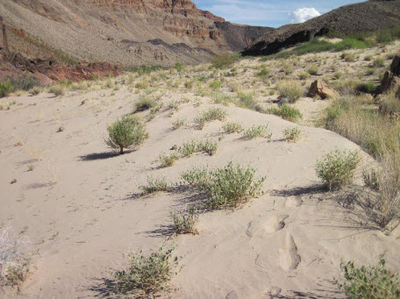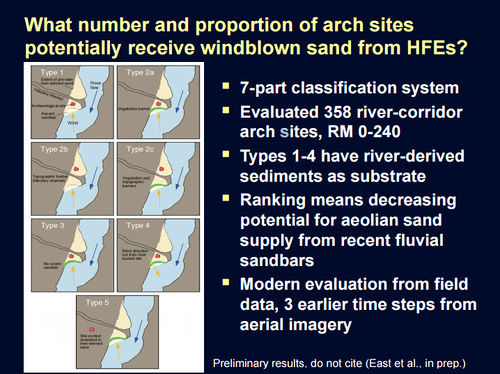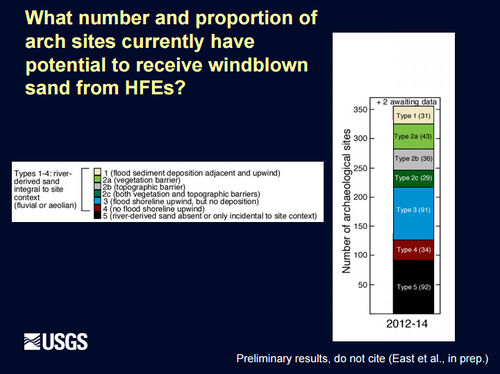Difference between revisions of "Aeolian Sand Transport"
From Glen Canyon Dam AMP
Cellsworth (Talk | contribs) |
Cellsworth (Talk | contribs) |
||
| Line 89: | Line 89: | ||
'''2013''' | '''2013''' | ||
*[https://www.usbr.gov/uc/rm/amp/twg/mtgs/13jan24/23_Draut.pdf Aeolian Landscapes and Archaeological Sites: 2012 Progress and New Work Plan (Project J)] | *[https://www.usbr.gov/uc/rm/amp/twg/mtgs/13jan24/23_Draut.pdf Aeolian Landscapes and Archaeological Sites: 2012 Progress and New Work Plan (Project J)] | ||
| + | |||
| + | '''2012''' | ||
| + | *[https://www.gcmrc.gov/about/ka/KA%202%20-%202-1-12/AM%20Talks/Draut%201030-1145%20Aeolian%20Landscapes.pdf Aeolian Landscapes ] | ||
'''2011''' | '''2011''' | ||
Revision as of 09:13, 9 June 2017
|
|
Aeolian Sand TransportSand can potentially help preserve archaeological features by direct burial and/or by mitigating gullying and other erosion. Sand can be deposited on archaeological features or within gullies via fluvial (river) or aeolian (wind) deposition. Most archaeological sites are above the highest contemporary river stage, so aeolian deposition is the most likely mechanism for preservation and/or erosion mitigation. River-sourced sand deposition is a time-dependent process, and the outer limit of that process may extend for many years after any individual HFE. Additionally, HFEs with targeted vegetation removal could produce a net sediment surplus at some sites. [1] |
| --- |
--- |
--- |
|---|
|
|


